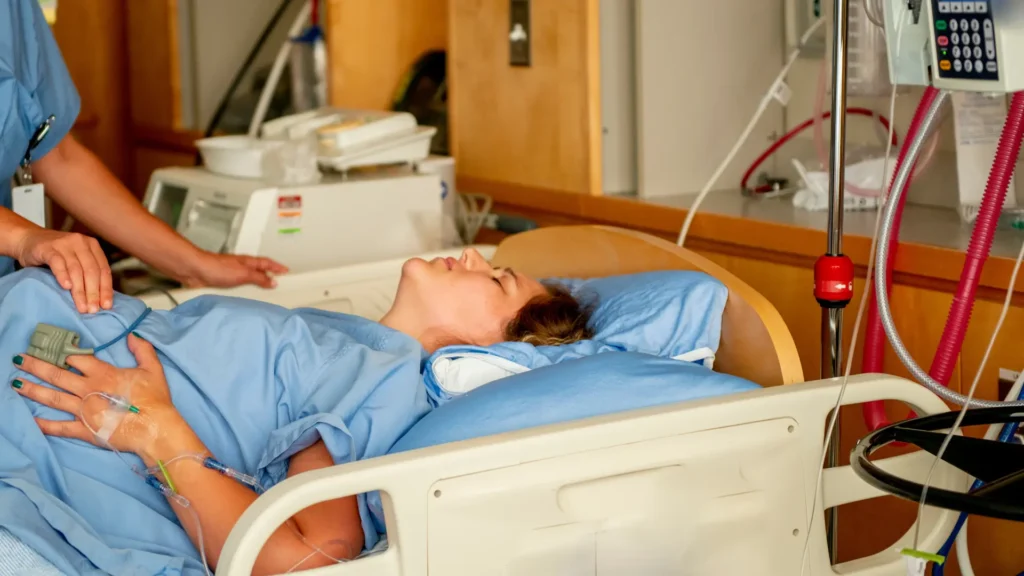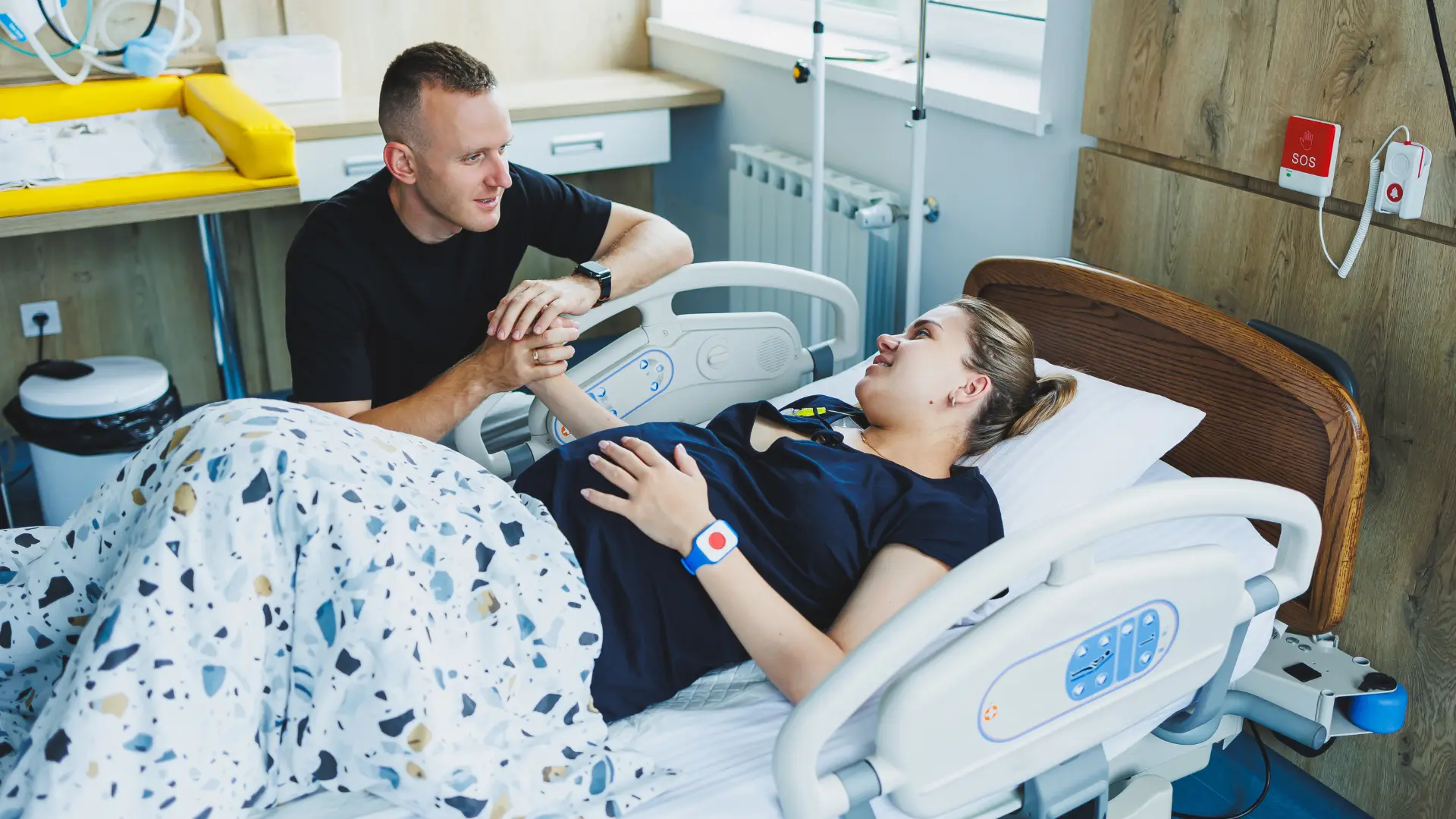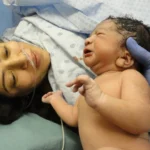For many expectant parents considering a “natural childbirth” – typically meaning a vaginal birth with minimal medical intervention – one of the most significant questions is: How will I manage the intensity of labour? It’s a valid and important concern. Labour is called ‘labour’ for a reason; it’s hard work, involving powerful physical sensations.
Dr. Vrushali Pillai, as a Senior Consultant Obstetrician & Gynaecologist at Borneo HospitalWe believe in providing comprehensive care that includes not only medical expertise but also tools and support to help women cope effectively during childbirth. While the intensity of labour is undeniable, there are many effective techniques that can help manage the sensations, promote comfort, and contribute to a positive experience.
This article explores various non-pharmacological strategies for Pain Management in Natural Childbirth. These techniques focus on working with your body’s natural processes. However, it’s vital to understand two things upfront: Firstly, these methods help you cope with strong sensations, they don’t necessarily eliminate pain entirely. Secondly, attempting a natural childbirth requires you to be medically assessed as a suitable candidate by your obstetrician, and choosing medical pain relief if you need or want it during labour is always a valid and respected option.
Understanding Labour Pain: More Than Just Pain
Labour pain is unique. Unlike pain from injury, it’s purposeful – it signals that your body is working effectively to bring your baby into the world. Key characteristics include:
- It’s Intermittent: Labour contractions come in waves, with periods of rest in between. These breaks allow you to recover and regroup.
- It’s Progressive: Intensity usually builds gradually, giving you time to adapt and employ different coping strategies.
- It’s Productive: Each contraction helps dilate your cervix and move your baby down the birth canal.
Often, the ‘suffering’ associated with labour stems less from the physical sensation itself and more from fear, tension, exhaustion, or lack of support. Effective Pain Management in Natural Childbirth focuses on reducing this suffering by promoting relaxation, confidence, and a sense of control. Your mind and body are deeply connected; a calm, focused mind can significantly influence how you perceive and manage physical intensity.

Building Your Coping Toolkit: Key Techniques for Pain Management in Natural Childbirth
Think of these techniques as tools you can learn and practice during pregnancy to build your personal toolkit for labour. A variety of techniques is available because what works best can vary from person to person, and even from one stage of labour to another.
1. Relaxation & Breathing Techniques
- Why They Work: Conscious breathing helps manage anxiety, prevents muscle tension that can fight against contractions, ensures good oxygen supply for you and baby, and provides a powerful point of focus during intense moments. Relaxation techniques calm the nervous system.
- Specific Techniques:
- Slow, Deep Breathing: Inhale slowly through your nose, filling your belly with air, and exhale slowly through your mouth. Use this during early labour and especially during the rest periods between contractions to conserve energy and stay calm.
- Patterned Breathing: During active, strong contractions, some women find lighter, rhythmic breathing helpful (sometimes taught as ‘hee-hee-hoo’ or similar patterns). The key is finding a rhythm that prevents breath-holding and keeps you focused. Practice is essential to find what feels right.
- Visualisation/Guided Imagery: Create a vivid mental picture of a calm, safe place (a beach, a garden) or visualise your cervix opening and your baby moving down with each contraction.
- Mindfulness: Focusing your attention on the present moment – noticing your breath, the sensations in your body – without judging them as ‘good’ or ‘bad’. Acknowledging the intensity but not letting fear take over.
- Progressive Muscle Relaxation: Learning to consciously tense and then release different muscle groups helps you recognise and let go of tension during labour. Practice this during pregnancy.
2. Movement & Positioning
- Why They Work: Changing positions utilises gravity, can help the baby descend in an optimal position, relieves pressure on specific areas (like the back), provides a distraction, and gives you a sense of agency.
- Specific Techniques:
- Staying Upright: Walking, swaying your hips, leaning forward against a wall, partner, or bed during contractions can be very effective.
- Using a Birthing Ball: Sitting and gently bouncing or rocking your pelvis on a large inflatable ball can ease discomfort and encourage pelvic opening. Leaning forward over the ball can also provide relief.
- Frequent Position Changes: Avoid staying stuck in one position. Try kneeling, being on hands-and-knees (excellent for back pain), squatting (with support, opens the pelvis), or side-lying. Listen to what your body feels it needs. Our labour rooms at Borneo Hospital are designed to facilitate movement where medically safe.
3. Water Immersion (Hydrotherapy)
- Why It Works: The buoyancy of warm water supports your body, reduces the feeling of pressure, promotes muscle relaxation, and creates a soothing, private space. Many women find it offers significant pain relief.
- Specifics: This involves labouring in a deep bath or a purpose-built birthing pool. If you are interested in this option, please discuss its availability and suitability for your specific situation with the team at Borneo Hospital. There are safety protocols regarding water temperature and when hydrotherapy is appropriate (e.g., usually once labour is well-established, membranes may need to be intact, requires intermittent monitoring capabilities).
4. Touch, Massage & Counter-Pressure
- Why They Work: Comforting touch releases calming hormones (oxytocin) and natural pain relievers (endorphins). Massage can ease muscle tension, and counter-pressure can provide direct relief from back pain. It also provides connection and reassurance.
- Specific Techniques:
- Counter-Pressure: Your partner or support person applying firm, steady pressure with their fists or heel of the hand to your lower back (sacral area) during contractions. This is particularly helpful if you experience intense back labour.
- Massage: Gentle rubbing (effleurage) on your lower abdomen or back, shoulder massage, or even hand or foot massage between contractions can be very soothing.
- Heat/Cold Packs: Applying a warm compress or heat pack to your lower back, hips or perineum, or a cool cloth to your forehead can provide comfort.
5. Creating a Conducive Environment & Atmosphere
- Why It Works: Feeling safe, secure, and undisturbed allows your body’s natural labour hormones to flow optimally. Fear and stress can actually slow labour and intensify pain perception.
- Specifics: Aim for dim lighting, a quiet atmosphere (minimise unnecessary chatter or interruptions), play calming music or sounds if you find it helpful, bring familiar items from home (like your own pillow). Discuss your preferences for the labour room environment with the Borneo Hospital staff beforehand.
6. Vocalisation & Sound
- Why It Works: Making sounds can be a powerful way to release tension and channel energy during intense contractions.
- Specifics: Don’t feel inhibited about making noise! Low-pitched moaning, humming, deep sighs, or even rhythmic chanting can feel helpful. This is different from high-pitched screaming, which often indicates panic and increases tension. Finding your ‘labour voice’ can be empowering.
The Crucial Role of Continuous Support
Having dedicated support throughout labour is incredibly beneficial for Pain Management in Natural Childbirth.
- Evidence Shows: Research consistently finds that women with continuous support tend to cope better, report higher satisfaction, and may even have shorter labours and fewer interventions.
- Who Provides Support: This can be your partner, mother, sister, a close friend, or a trained professional labour support person called a doula.
- What Support Looks Like: It involves continuous presence, offering emotional encouragement (“You’re doing great!”), physical comfort (massage, helping change positions, offering water), providing information, and sometimes helping communicate your preferences to staff. A key important aspect is their calm presence.
Practice Makes Progress
These techniques are skills, and like any skill, they become more effective with practice.
- Practice During Pregnancy: Don’t wait until labour starts! Regularly practice your chosen breathing patterns, relaxation exercises, and visualisations during the weeks and months leading up to your due date.
- Attend Antenatal Classes: Good quality childbirth education classes provide structured learning and practice opportunities for these coping strategies. This practice is useful towards managing intensity.
- Involve Your Partner: Practice together so your support person understands the techniques and how best to assist you when the time comes.
When Techniques Aren’t Enough: Knowing Your Options & Flexibility
It’s vital to approach labour with realistic expectations.
- Labour’s Unpredictability: Sometimes, despite the best preparation, labour might be exceptionally long, unusually painful due to the baby’s position, or complications might arise that make coping solely with non-pharmacological methods extremely difficult or impossible.
- Medical Pain Relief is a Valid Choice: It is crucial to know that choosing medical pain relief does not mean you have ‘failed’ at natural childbirth. At Borneo Hospital, we offer options like Entonox (‘gas and air’) and epidural anaesthesia. Discuss these options with your doctor during pregnancy so you understand how they work, their benefits, and potential side effects. Having this knowledge allows you to make an informed choice during labour if needed.
- Flexibility is Key: The most important preparation is mental flexibility. Be prepared to adapt your plan based on how your labour unfolds and what feels right or becomes medically necessary at the time. The goal isn’t adherence to a rigid plan, but a safe birth and a positive experience.

Borneo Hospital’s Supportive Approach
At Borneo Hospital, we strive to create an environment that supports your choices while ensuring safety. Our team:
- Encourages movement and position changes during labour whenever medically safe.
- Welcomes and supports the active involvement of your chosen birth partner.
- Provides aids like birthing balls where available and appropriate.
- Respects your desire for a calm environment where possible.
- Is fully equipped and ready to provide effective medical pain relief options promptly and safely if you request them or if they become medically indicated.
- Is committed to clear communication and patient-centred care.
Effective Pain Management in Natural Childbirth involves building a rich toolkit of coping strategies – encompassing mind, body, and environment. Preparation, practice, continuous support, and crucially, mental flexibility are your greatest assets. Learning to work with your body’s innate power through breathing, movement, relaxation, and positive focus can transform your experience of labour intensity.
Remember, the goal is a birth experience where you feel supported, respected, and safe, culminating in the joyous arrival of your healthy baby. At Borneo Hospital, we are honoured to partner with you on this journey, providing expert care and supporting your informed choices every step of the way.
















